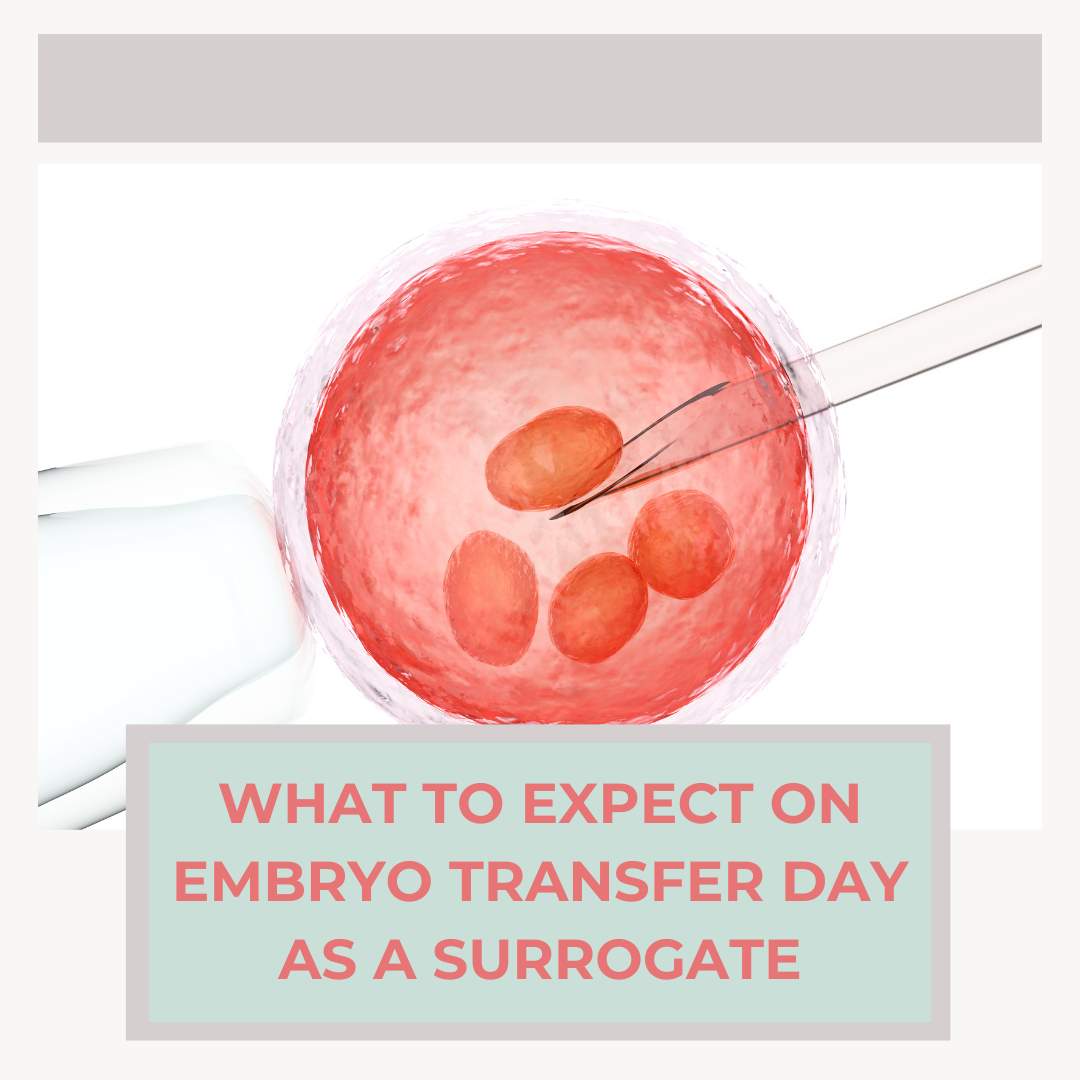You’ve finally made it down the long road to embryo transfer day! Knowing what to expect can help ease any anxieties and ensure you are fully prepared for this crucial step.
TAKE THE SURROGACY QUIZ CHAT WITH A SURROGATE
Before the Transfer
Morning Preparation: On the morning of your transfer, follow your clinic’s instructions closely. This might include taking specific medications or following dietary guidelines. Make sure to wear comfortable clothing and bring any necessary documentation or identification with you.
Arrival at the Clinic: Arrive at the fertility clinic as scheduled. You’ll check in and may need to complete some final paperwork. The staff will guide you through the process and answer any last-minute questions you may have.
The Embryo Transfer Procedure
(Here’s a past podcast episode of ours that discusses the embryo transfer process!)
Pre-Procedure Prep: You will be taken to a procedure room where you’ll change into a gown. The medical team will explain the steps and ensure you’re comfortable. An ultrasound will be used to guide the process, and a full bladder is often required.
The Transfer: The doctor will place the embryo into your uterus using a thin catheter. The procedure is usually quick and painless, often taking less than 30 minutes. You might feel some mild discomfort, similar to a pap smear, but it’s generally well-tolerated.
Post-Transfer Rest: After the transfer, you’ll rest in a recovery area for a short period. The clinic will monitor you briefly to ensure you’re feeling well before you leave.
TAKE THE SURROGACY QUIZ CHAT WITH A SURROGATE
After the Transfer
Rest and Recovery: Once you’re home, it’s essential to rest and follow any specific instructions from your clinic.
Medications: Continue taking any prescribed medications, such as progesterone, as directed. These medications support the early stages of pregnancy and are crucial for a successful pregnancy.
Monitoring Symptoms: Pay attention to how you feel and report any unusual symptoms to your clinic. Mild cramping and spotting can be normal, but severe pain or heavy bleeding should be reported immediately.
The Two-Week Wait
Stay Positive: The period between the transfer and the pregnancy test, known as the “two-week wait,” can be challenging. Stay positive, take care of yourself, and lean on your support network.
Follow Up: You’ll have a scheduled blood test approximately 10-14 days after the transfer to confirm pregnancy. This test will measure the levels of hCG (human chorionic gonadotropin) in your blood to determine if the embryo has implanted successfully.
TAKE THE SURROGACY QUIZ CHAT WITH A SURROGATE
Conclusion
Understanding what to expect on embryo transfer day can make the experience smoother and more reassuring. At Surrogacy Mentor, we’re here to support you every step of the way. Your dedication and generosity as a surrogate are truly inspiring, and we’re honored to be part of your journey.
For more information and resources, visit our website or contact us directly.

